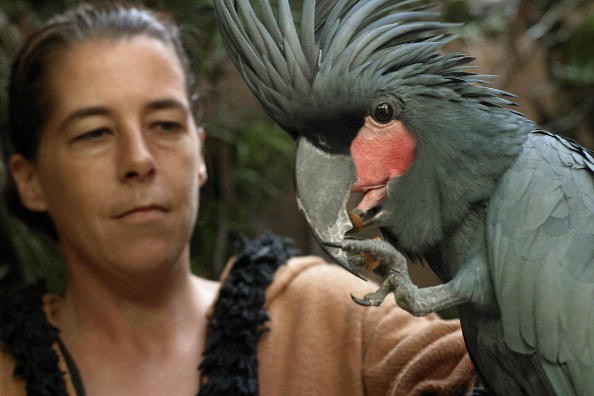Palm cockatoo - the largest parrot in Australia - is well-known as the only non-human animal to make sound-related tools. This bird produces drumsticks to generate a rhythmic beat. Sadly, extinction is threatening the "Ringo Starr" of the avian world just like many other parrots.

Palm Cockatoo Moved to the Endangered List
The Queensland government listed palm cockatoo, also known as the goliath cockatoo, as endangered based on a 20-year study of palm cockatoo populations.
The research anticipates a drastic drop from 47% to a whopping 95% in the next half-century. Given the present population of 3,000 birds, it is projected to fall to 150 birds. They may vanish from Australia within our lifetimes.
Palmies, as they are usually called, descended from an ancient lineage of parrots. They only exist in Australia on the Cape York Peninsula in far north Queensland, where they suffer many challenges.
They're losing habitat owing to inadequate fire control and continuous land development, and females only lay one egg every two years.
Only 23% of their chicks survive to fledge. Each breeding couple successfully raises one chick every ten years. Who knows whether that five-year-old fledgling will reach sexual maturity?
Identifying individual birds over time is challenging with these species. Palmies is yet to be captured and marked with leg bands or GPS trackers.
Study on palm cockatoo genetics and vocal dialects shows the peninsula's three primary populations are weakly linked, limiting bird mobility. Each tribe has evolved "cultural" qualities that have not spread. Examples of characteristic cries include a peculiar human-like "hello" made by birds in the eastern population.
The disadvantage is that if one population suffers, the others cannot take up the slack and produce reinforcements.
How Can We Save Them?
Trouble for Palmies. It will need a team effort to save them.
There is an urgent need to learn why they can't breed, whether this is true for all three groups, and how palmies exploit the terrain.
Simultaneously, there must be improvement in management of their habitat. Preventing catastrophic bushfires from destroying their historic nesting trees and preventing future destruction of these irreplaceable trees.
These trees are an important piece. Palmies are selective breeders. Not just any tree hollow will do. They reproduce in enormous, ancient hollow-bearing trees up to 300 years old.

Protecting Palm Cockatoo's Habitat
It has been found that clearing three meters of grass and trash near nesting trees prevents fires. Of course, this takes time.
Bushfire incidence and severity have increased in tropical Australia since Europeans began controlling the area. Returning to the Uutaalnganu, Kanthanampu, and Kuuku Ya'u language groups' customary cool burns might help remedy this issue. It also diminishes habitat.
Cape York is presently undergoing strip mining, road development, and quarrying, all of which contribute to habitat destruction. Skilled ecologists can assess planned clearing zones ahead of time, reducing harm.
The remaining palm cockatoo breeding habitat on Cape York must also be assessed and protected as much as possible to keep this species alive. Improved nest hollow detection is also needed. Researchers have studied palmies for over two decades and can certainly declare that no bird is more difficult to study.
It has also been discovered that palmies are quite cautious of people, and this makes discovering their nesting hollows challenging.
Improving fire safety, protecting their habitat, and protecting the vital ancient trees can help bring them back from the brink.
Related Article : Goffin's Cockatoos Craft Cutlery Tools to Extract Seed from Sea Mangoes
For more news, updates about palm cockatoos and similar topics don't forget to follow Nature World News!
© 2025 NatureWorldNews.com All rights reserved. Do not reproduce without permission.





